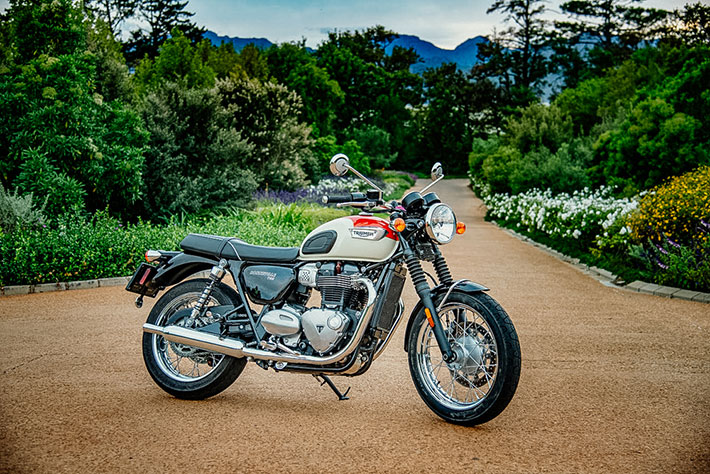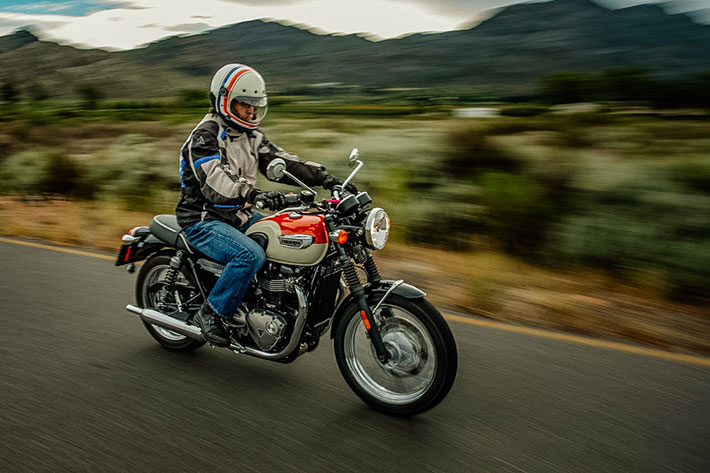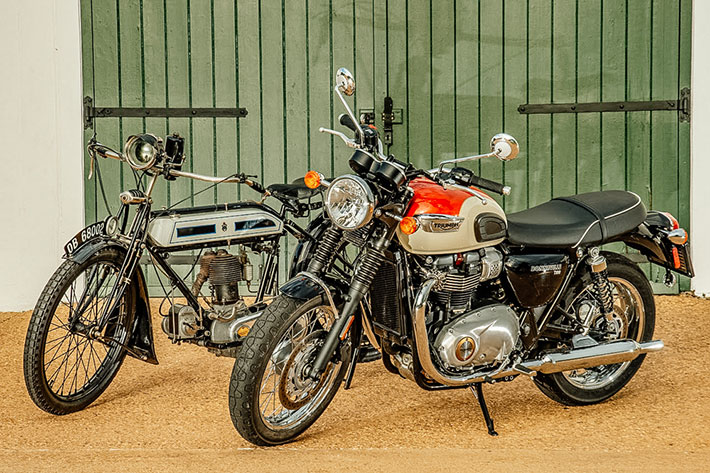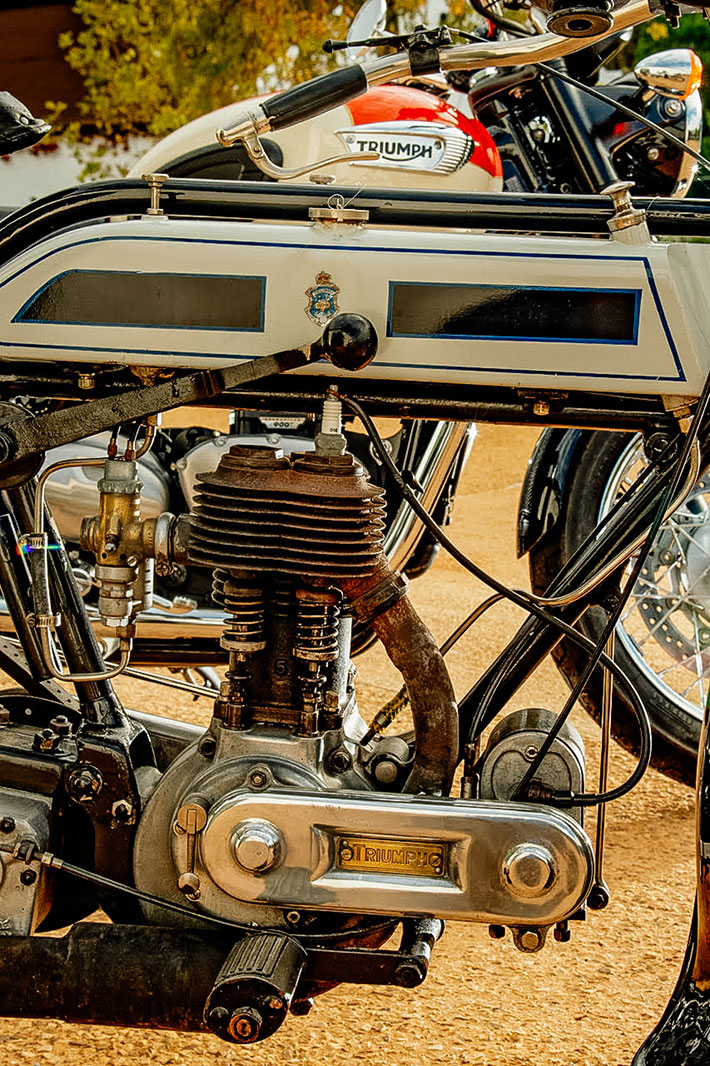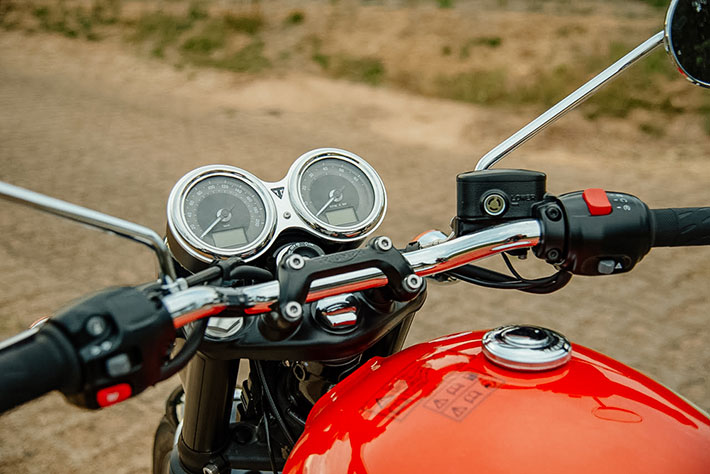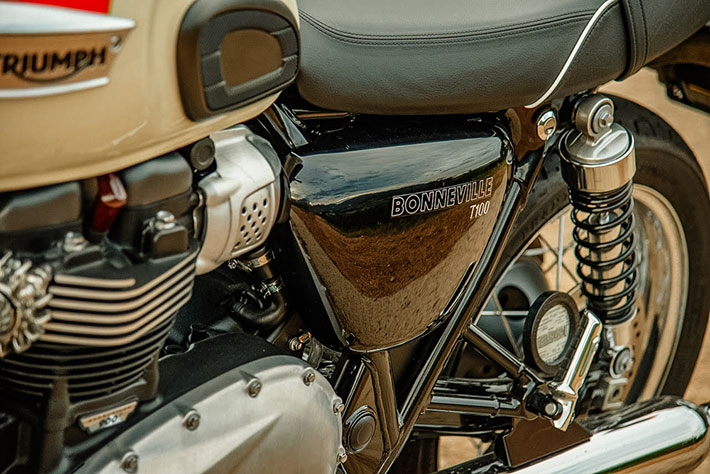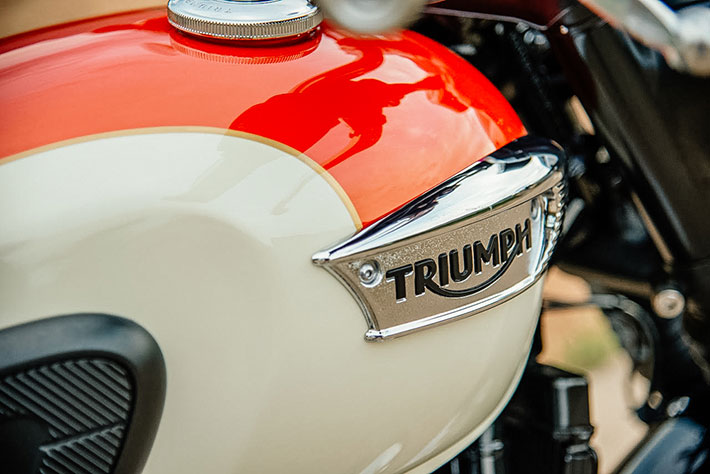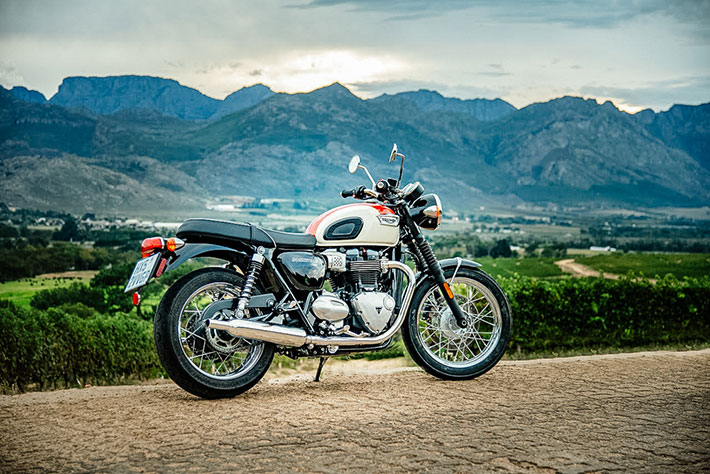
29 Apr On yer bike: Triumph Bonneville
Do the new retro bikes rekindle that truly retro ride and feeling, or are they all just about looks? FMM Curator and self-confessed motorcycle enthusiast Wayne Harley has set out to try and ride as many of the different retro-styled bikes as he can, not to directly compare them with each other, but to see if his smile is going to be as big as when he rides FMM’s classic machines. This month he once more goes forth in Triumph…
The Triumph Bonneville has to be the most recognisable British motorcycle of the late-50s and 1960s. It oozed class and panache, and with a heritage set deeply in Triumph’s Speed Twin, the Bonneville had the go to match the show.
But first, Bonneville. As early as 1951, a Thunderbird racer with a trick engine clocked a top speed of 134 mph (216 km/h) on the Bonneville Salt Flats in Utah. Five years later, Johnny Allen reached an impressive 214 mph (344 km/h), however it was never acknowledged outside of the USA. Then in 1958, a Triumph Tiger T110 with a modified engine, ridden by Bill Johnson, set a class-winning record speed of 147 mph (237 km/h) that would lead to the Triumph T120 becoming the first bike to bear the Bonneville name.
The original Bonneville had a 650 cm3 air-cooled twin with dual Amal carburetors that produced 46 bhp (34 kW), and had a standard top speed of 115 mph (185 km/h) with a four-speed gearbox. These original Bonnevilles remained in production until 1971 when it was replaced with the 750 cm3 T140. Triumph would continue producing the T140 until 1983 when the Meriden, Coventry works finally shut its doors. However, the Bonneville was kept alive until 1988 as the T140 continuation model known as the Devon Bonneville, but that was short-lived. But to many, the best Bonneville was the 1968 T120. It was a pure bike with matching good looks, great handling and regarded as having the most reliable of motors and electrics of any of the original Bonnevilles.
Fast-forward to 2019 and my quest to ride the modern retro bikes to see if they match up to the old school machines. This month’s test machine is the new Bonneville T100 supplied by Triumph SA, and there is no denying that Triumph has hit this nail on the head. The T100 also oozes the class and panache that the T120 did some sixty years ago; the scale, shape and ergonomics are so close to the original Triumph’s.
Having been privileged to have ridden many British bikes from the 50s and 60s, I found the riding position familiar as I settled onto the saddle. As has become the pattern, my first encounter with the bike was in Friday afternoon traffic, and as with most of the other retro bikes I have ridden, the Triumph makes a great commuter with its narrow girth that allows one to slip easily through the congested five o’clock traffic with space to spare. Having 80 N.m of torque at 3 250 r/min precludes having to constantly change gear. With a very comfortable seat height, I found even standing at rest in traffic was no problem.
The following day I headed up and over the Franschhoek Pass where Triumph’s sporty heritage came through. Yes, I know this is no superbike; the 900 cm3 engine pumps out 40,5 kW @ 5 900 r/min via a contemporary chain-and-sprocket drive. However, if you consider the tubular steel frame is still basically similar in design and geometry as the ’60s machine, then cornering and straight-line stability is very impressive – or was the old bike just that good? The KYB front and adjustable rear suspension is also up to the job, and if you don’t mess with the traction control, the bike will remain rock solid through the bends even if you’re pushing it a bit.
The original T120 was fitted with 8-inch drum brakes with twin leading shoes, which did the job well enough, but the new bike has a 310 mm Nissin disc on the front wheel and a 255 mm disc on the rear, both equipped with ABS, and are in a different class when compared with the original Bonneville’s anchors. One has to consider that the modern bike weighs 215 kg dry, whereas the original bike only weighed about 170 kg, so the extra stopping power is necessary. Everything on the Bonneville is made to look and feel classic retro, but the ride has become very modern and clinical. There is the option to turn off the traction control, but it still feels just too clinical.
Allow me one last criticism, which is just a personal observation. The instruments do their job well and tell you everything you need to know, but they look so ‘after the fact’. And that chrome detail just doesn’t look right. On a bike that has got so much right, they could have looked at the original Smith instruments used on the 1968 bike and imitated them for the new machine. But, in conclusion, I have to say I think Triumph has created a great formula with this Bonneville T100, and overall is capturing that retro feeling very well.
